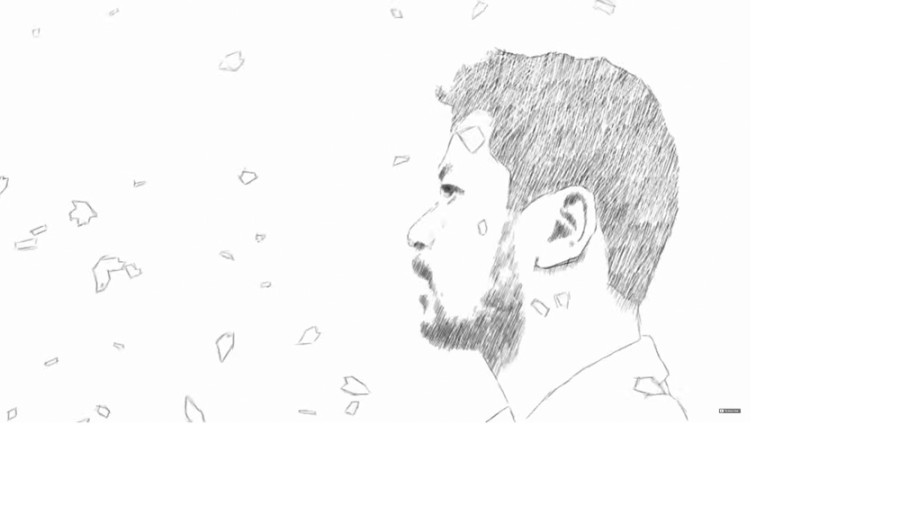Miscellaneous
And it spread
The video animation to Bipul Chhetri’s classic Wildfire is wonderful to watch and complements the motifs of the original track
Mark Harris
If you haven’t heard of Bipul Chettri, you have not been listening to Nepali music. The artist from Kalimpong, India, has in the past few years become an icon for contemporary Nepali folk music, performing sold-out concerts around the world. Chettri first broke into the scene by uploading the song Wildfire, Dadhelo, in 2013, on a Soundcloud account. The song instantly became popular, laying the foundations for his first album Sketches of Darjeeling released in 2014. Three years after the release of the track, Chettri has finally produced a music video for the song with the help of artist Asis Rai and Polka Studios.
The music video is black and white animation that begins with a minimally drawn boy waking up and walking to a window. He peers out the window as sketches of pine trees bounce up and down before they transform into flames, beautifully illustrating the opening lyrics, “There is wildfire on the hill at dusk. There is sadness in my heart.”
The burning flames fade to black and the animation shifts again to present a seemingly older boy, who reaches longingly toward the camera. The frame then cuts to an abstract sky with sketched clouds moving across it. From here it tells the story of Bipul’s career while frequently moving back and forth between the surreal and the biographical. The music video is tasteful and echoes the same kind of sentimentality and imagination that can be found in the song for which it was made. While the visuals are what drive the music video, there is a loose narrative within it that act like the artist’s creation myth. The story charts his humble beginnings as a youth literally discovering a guitar, through struggling with songwriting to a climactic arrival on a stage surrounded by fans.
Musically, the song builds slowly and gently, relaxing the listener with layered guitar riffs that are at once catchy and sophisticated. It is easy to understand why his music is so popular. Bipul Chettri has an authenticity to his work that deeply resonates with lyrics that draw on cultural themes familiar to his audience, and tied to the hills where he grew up. This common touch makes his songs accessible and easy to relate to, while the instrumentals being rather technical provide substance to the more discerninglistener. By drawing from themes of old Nepali folk songs while adding a contemporary musical flair, Chettri places himself within a long-standing folk music tradition, but remains exciting and palatable to a new generation.
What is notably interesting about the artist is that despite singing in Nepali and being embraced by Nepali audiences as one of their own, he is Indian by nationality. Still, like many people from Darjeeling and from the areas as far east as Sikkim, he shares a common culture, language, and ethnicity with people of Nepal. The result: one people group split between two nations, and a question of what makes a person Nepali arose. For in the country itself, nationality extends to all people within the borders, regardless of what their ethnicity might be. In this sense, Nepal is a story of many people groups splitting a nation, but with one particular ethnic group being somehow more Nepali than the others, if only because their ancestors conquered their neighbours.

But this is beside the point. Bipul Chettri has created a video that uniquely visualises the atmosphere of his music, making images that are tender and moving, by using simple and abstract animations. What is remarkable about this video is that it avoids many of the played out themes found in other videos of a similar genre, like a couple in love dancing on a hill, or the band performing live. It manages to present the artist, without saying all that much about him, or making him out to be someone that he is not. If there is a criticism to be made, it is that given the possibilities that animation provides, it did not take many risks. The illustrator may have engaged in a time consuming process by, apparently, creating more than 1000 individual frames, but perhaps he could have pushed the surreal aspects of the video a bit further.
All in all, Wildfire is a great song, and the video is a must-watch for anyone interested in the new generation of Nepali folk.
Harris is co-founder of Patan-based Art Haus of Kathmandu




 9.12°C Kathmandu
9.12°C Kathmandu








%20(1).jpg&w=300&height=200)

